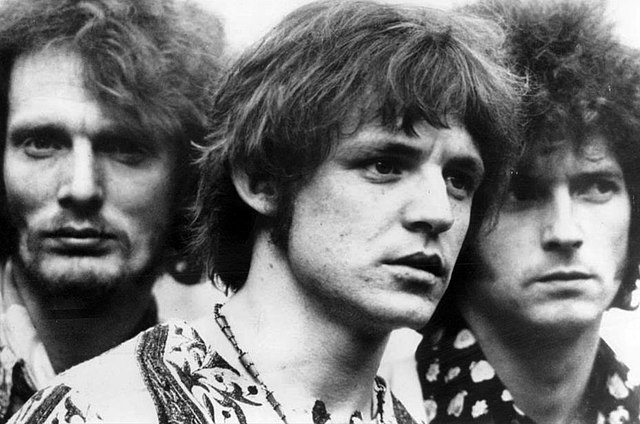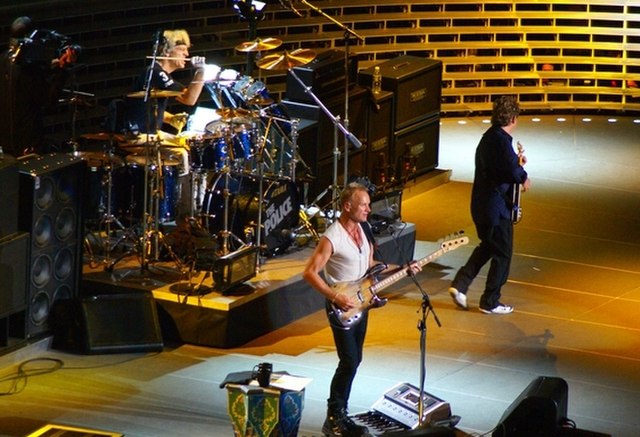A power trio is a rock and roll band format having a lineup of electric guitar, bass guitar and drum kit, leaving out a dedicated vocalist or an additional rhythm guitar or keyboard instrument that are often used in other rock music bands that are quartets and quintets. Larger rock bands often use one or more additional rhythm sections to fill out the sound with chords and harmony parts.
Cream
Rush
The Police
An electric guitar is a guitar that requires external amplification in order to be heard at typical performance volumes, unlike a standard acoustic guitar. It uses one or more pickups to convert the vibration of its strings into electrical signals, which ultimately are reproduced as sound by loudspeakers. The sound is sometimes shaped or electronically altered to achieve different timbres or tonal qualities from that of an acoustic guitar via amplifier settings or knobs on the guitar. Often, this is done through the use of effects such as reverb, distortion and "overdrive"; the latter is considered to be a key element of electric blues guitar music and jazz, rock and heavy-metal guitar-playing. Designs also exist combining attributes of the electric and acoustic guitars: the semi-acoustic and acoustic-electric guitars.
1954 Gibson Les Paul Custom electric guitar
The "Frying Pan", 1932
The Fender Stratocaster has one of the most often emulated electric guitar shapes
Epiphone semi-acoustic hollow-body guitar







